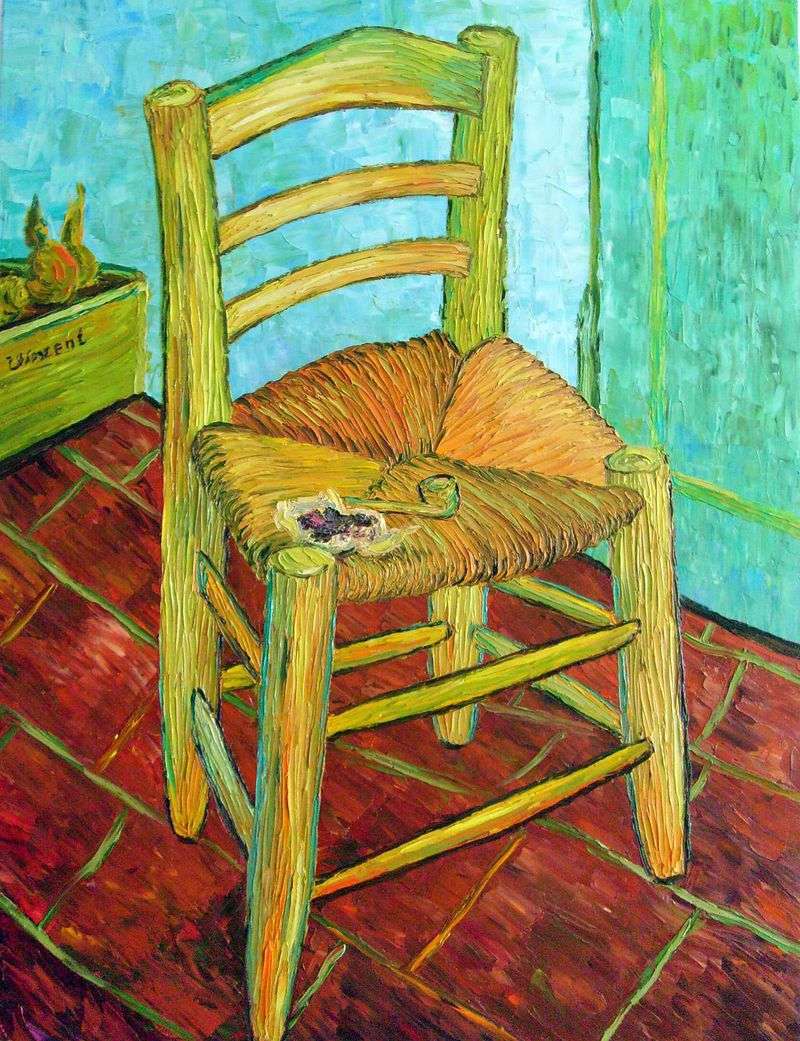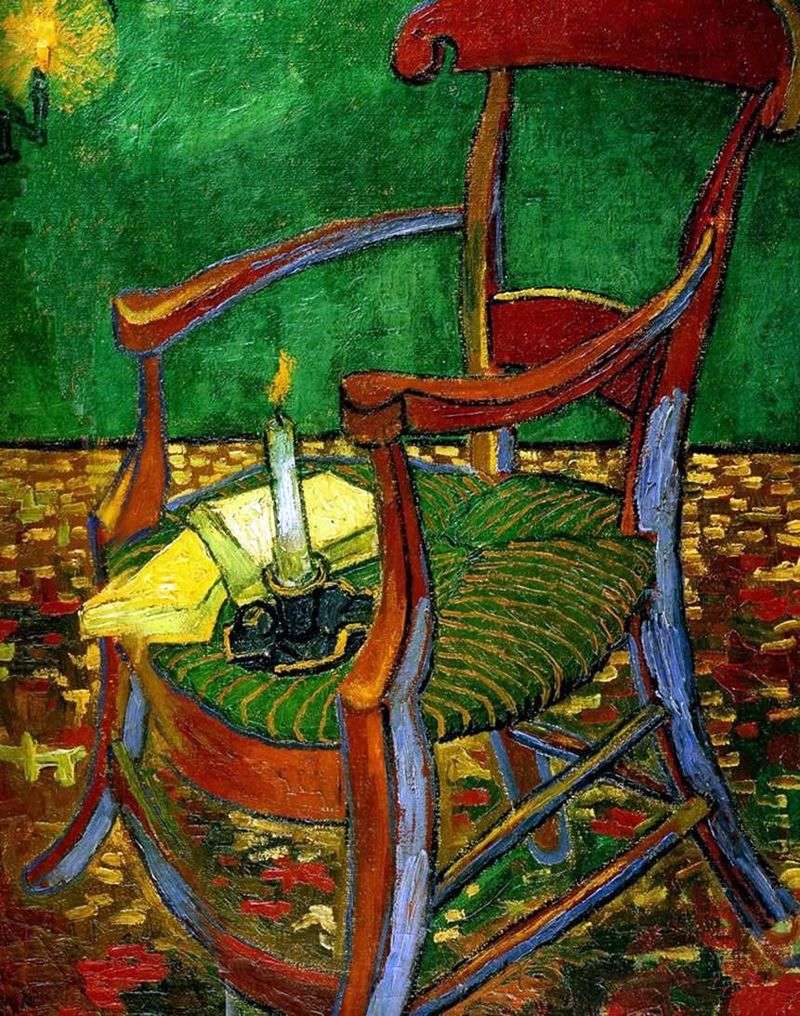
On October 25, 1888 Paul Gauguin came to visit Van Gogh in Arles. Friends enthusiastically discuss the idea of creating a “South workshop” – a community of artists, conceived by Vincent. However, the disagreements that have arisen soon lead to a quarrel and an unexpected act on the part of Van Gogh – he is mad, he races against Gauguin with a razor and then cuts off his earlobe. The circumstances of the incident are still unknown, but some researchers believe that this extreme behavior was most likely the result of excessive use of absinthe.
After a short stay at the hospital, Van Gogh took on a self-portrait. With his help, he sought an answer to the questions: what’s wrong with me? how to live? The artist tried to regain his self-confidence and restore the exhausted mental powers.
He uses the traditional pectoral image as the most stable one. A dark fur hat and a green jacket seem to ring a pale face with traces of a recent misfortune, indicated by a piece of cotton wool attached to the ear and a bandage supporting it. However, neither the joy of recovery nor the confidence in the future is felt. Alone with himself, the artist is disarmingly frank.
Self-portrait can be divided into three color parts: orange, red and green. There is an opinion that such a combination of colors is tasteless, in fact it is classical in color theory. Being near, these shades give each other brightness and expressiveness.
In fact, Van Gogh cut off the lobe of his left ear, but on the canvas bandaged right. This is because the artist painted the painting, looking in the mirror. The person in the portrait looks unnatural and detached: his eyes are too close to each other, and Van Gogh himself seems to be tens of years older than the age in which he painted the painting.
Researchers creativity Van Gogh often with respect to his self-portraits use the term “romantic depromanticization of the image.” The artist is merciless toward himself and with all the means available to him, shows that he is deprived of any kind of exclusivity and is just one of many, a common humble person. Poorly in contact with others, the painter seems to find refuge in himself.
 Self-portrait with a bandaged ear by Vincent Van Gogh
Self-portrait with a bandaged ear by Vincent Van Gogh Vincent’s chair and his smoking pipe (Vincent’s chair with a pipe) by Vincent Van Gogh
Vincent’s chair and his smoking pipe (Vincent’s chair with a pipe) by Vincent Van Gogh Self-portrait in a straw hat with a pipe by Vincent Van Gogh
Self-portrait in a straw hat with a pipe by Vincent Van Gogh Self-portrait with a pipe by Vincent Van Gogh
Self-portrait with a pipe by Vincent Van Gogh Vincent’s chair with his pipe by Vincent Van Gogh
Vincent’s chair with his pipe by Vincent Van Gogh The chair of Gauguin by Vincent Van Gogh
The chair of Gauguin by Vincent Van Gogh Portrait of Dr. Felix Rhea by Vincent Van Gogh
Portrait of Dr. Felix Rhea by Vincent Van Gogh Self-Portrait with cut ear and a tube by of Vincent of Van Gogh
Self-Portrait with cut ear and a tube by of Vincent of Van Gogh